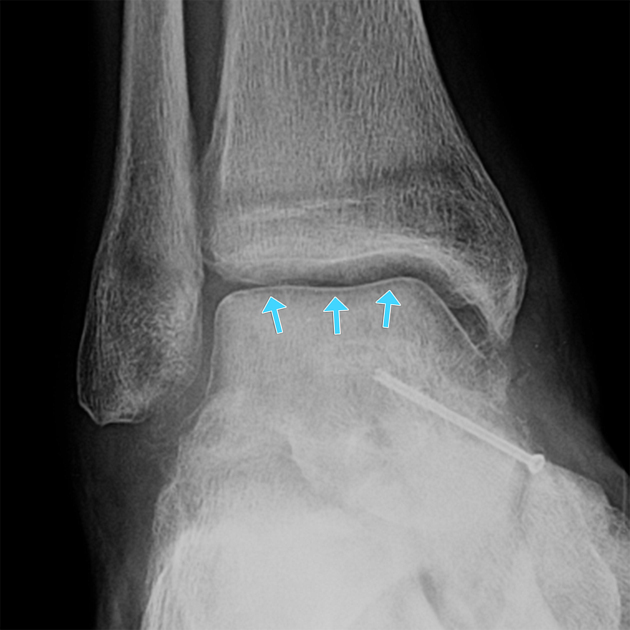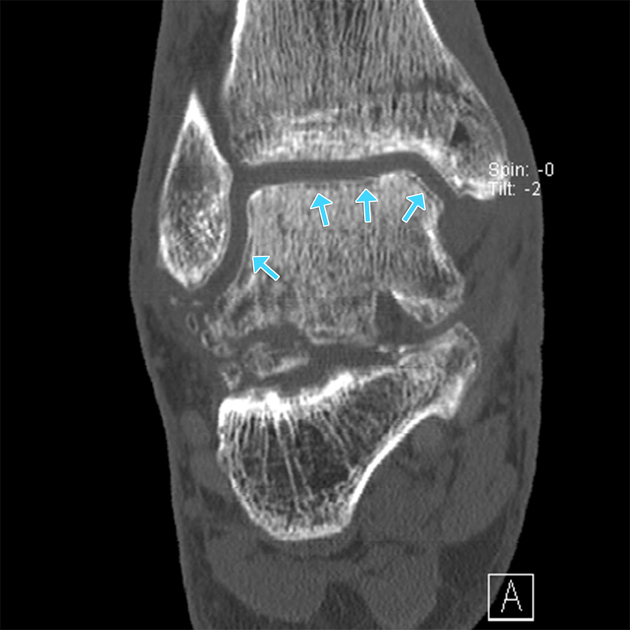The Hawkins sign describes subchondral lucency of the talar dome seen in AP view that occurs secondary to subchondral atrophy 6-8 weeks after a talar neck fracture 1.
This indicates that there is sufficient vascularity in the talus, and is therefore unlikely to develop osteonecrosis of the talar dome later 2,3.
Disruption of the blood supply to all or a portion of the talar dome results in the absence of the Hawkins sign (seen as subchondral sclerosis), which usually indicates underlying osteonecrosis 4.
History and etymology
The sign is named after Leland G Hawkins (1933-1991) 5, an American orthopedic surgeon. He also established the Hawkins classification of talar neck fractures which helps to assess the risk of osteonecrosis of the talar dome.







 Unable to process the form. Check for errors and try again.
Unable to process the form. Check for errors and try again.